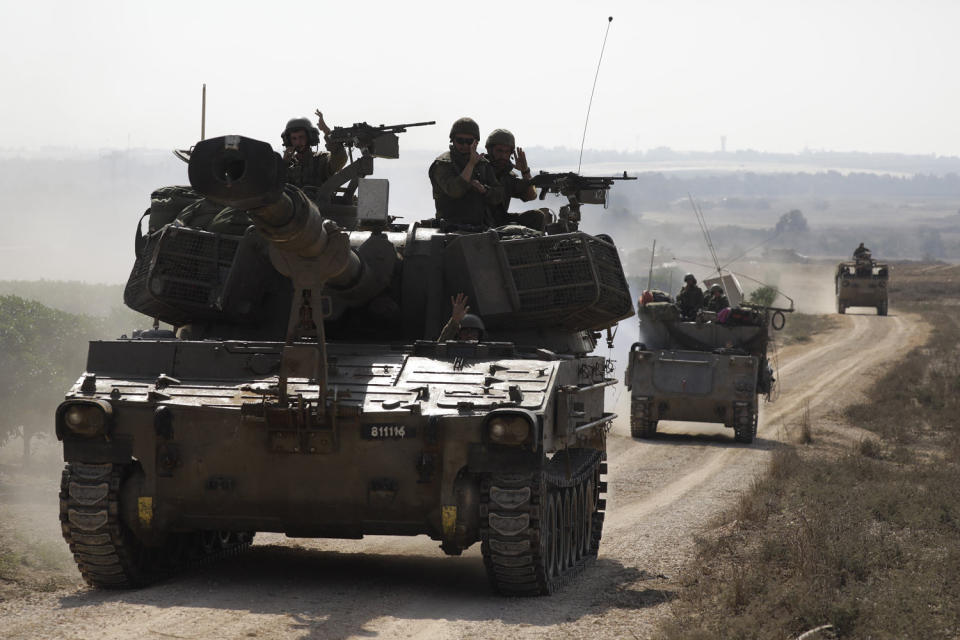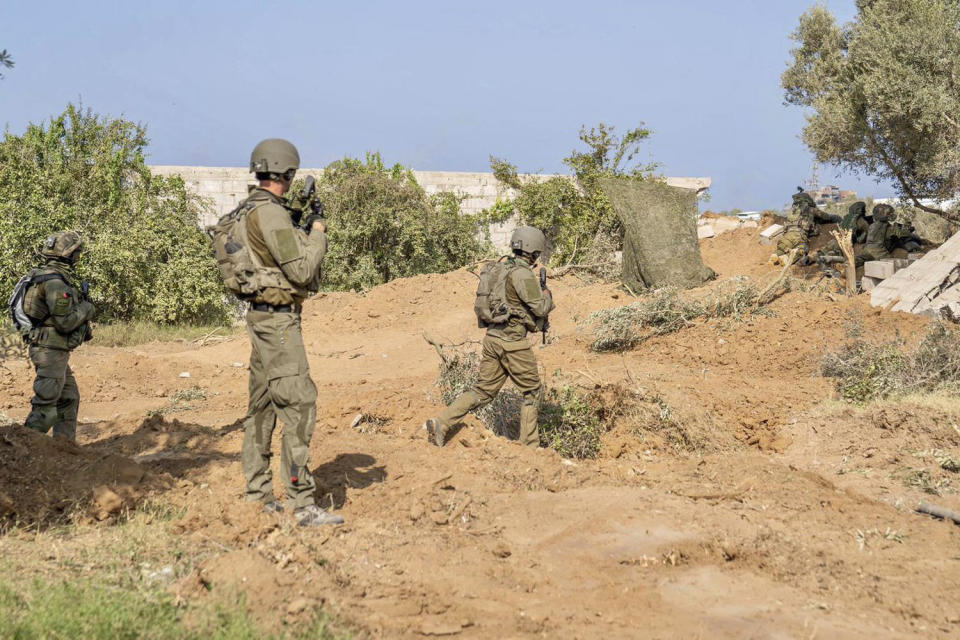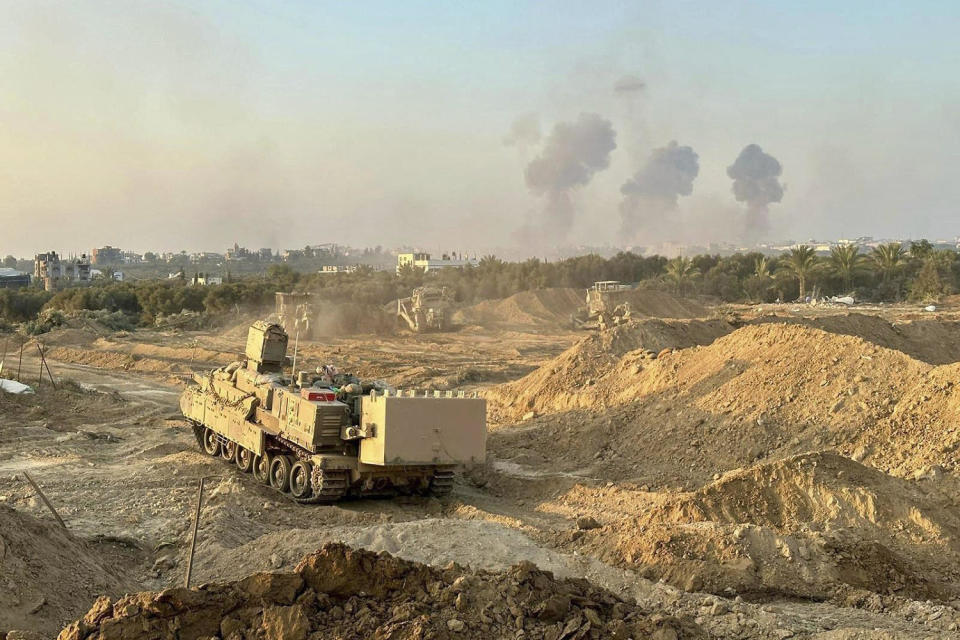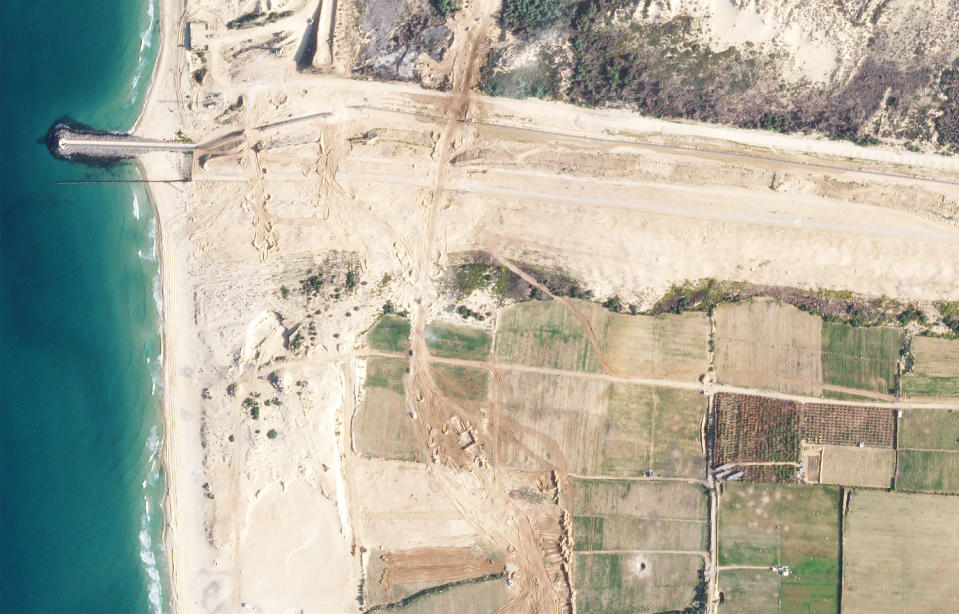Israel encircled Gaza City. Here's what we know about its ground assault.
TEL AVIV — The Israeli military is thrusting deeper into the Gaza Strip in a ground assault that has encircled the Palestinian enclave’s biggest city and cut off the main roads connecting its north and south, Israeli officials and Western military analysts said.
The campaign has been shrouded in mystery, with growing numbers of Hamas fighters and Israeli soldiers reported dead, but without a clear, publicly stated plan from Israel about how this campaign might end — or, in fact, a statement that it had even begun. Experts have been forced to read between the lines of nonspecific military briefings, satellite imagery and shaky footage from the battlefield.
On the other hand, the mounting Palestinian civilian death toll is more than apparent. Israel blames Hamas for using people as human shields, but international organizations and even the United States are becoming increasingly alarmed at the civilian cost of Israel’s intensifying operation in the densely populated enclave.
The stated goals of Israel are clear: defeat Hamas and rescue the 240 or so hostages confirmed being held inside Gaza.
“We are advancing,” Israeli Prime Minister Benjamin Netanyahu said Thursday. “Nothing will stop us.”
How Israel achieves these goals is less certain, given the amorphous nature of Hamas as an organization; the huge risk involved in attempting to retrieve the hostages; and growing international pressure, including from the United States and Arab leaders, to minimize Palestinian civilian casualties and supply humanitarian aid to the besieged enclave.
Israel has resisted calls for a pause in the fighting, and appears to be pushing forward through the streets of Gaza. Based on Israeli military and Hamas statements, satellite images and footage posted on social media that has been analyzed by NBC News, it seems clear Israel has now encircled Gaza City, which it says is the main base of Hamas, the militant group that carried out the attacks on Oct. 7.
IDF soldiers were fighting “face-to-face” battles with Hamas militants around the densely populated city, Israel Defense Forces spokesman Daniel Hagari said at a news briefing on Wednesday, while destroying its infrastructure and seeking to control its network of tunnels. Meanwhile, Israel’s relentless bombardment, now three weeks old, was continuing, with Israeli troops calling in airstrikes, Hagari said.
The assault also appears to have split the enclave in two, attacking from Gaza’s eastern flank and reaching as far as the coastline, said Michael A. Horowitz, a Jerusalem-based analyst who is the head of intelligence at Le Beck International, a risk-management consultancy focused on the Middle East. This is an apparent attempt to hive off northern Gaza from the south, where Israel has told Palestinians to evacuate to but it is still bombing.
Hamas says it’s fighting back, claiming to have killed four Israeli soldiers in overnight fighting, and posting a video appearing to show one of its members ambushing a tank and planting a bomb on it — a hint of the kind of tactics that could hamper Israel’s advance.

Twenty-four soldiers have died since Israel launched its ground incursion seven days ago, adding to the 1,400 people killed and around 240 kidnapped on Oct. 7.
Meanwhile, 9,227 Palestinians have been killed in the Israeli bombing and ground operations, including 3,826 children, according to health officials in Gaza.
Those numbers may only soar in the days ahead, as analysts expect Israel’s operation to enter a new and precarious stage: advancing into the tightly packed residential neighborhoods of Gaza City itself.
Palestinian civilians are often the largest casualties of Israel’s wars in Gaza. But “the difference between this war and previous operations, like Protective Edge” — Israel’s name for the 2014 Gaza War — “is the volume of casualties for Israel,” said Aviv A. Oreg, a major in the Israeli reserves whose career has included senior roles within Israel’s intelligence services.
One of the IDF’s main goals, Horowitz said, is to take control of Hamas’ vast system of tunnels — often referred to as the “Gaza Metro” — which analysts estimate stretch for more than 300 miles.
Troops are trying to do this “without necessarily entering the tunnels,” Horowitz said. “The tunnels are so complex that if you enter them, you’re not sure we’re going to come out.”
That means trying to isolate Gaza City, where most of the tunnels are.

Images from the satellite company Planet Labs show where tanks and armored bulldozers breached the security fence around Gaza in multiple locations, their tracks snaking through terrain pockmarked by the artillery and rocket fire of the past three weeks.
Both of Gaza’s main north-south roads, the central Salah al-Din and coastal al-Rashid, appear to have been blocked off by the Israeli military, according to Horowitz, citing open source intelligence for Salah al-Din, and officials inside Gaza for al-Rashid. The presence of tanks on Salah al-Din road appeared to be confirmed by a video, geolocated by NBC News, showing a car being shot at and exploding and a tank visible in the background.
Those growing reports of civilian casualties and a push to allow time for hostages to be released have helped drive mounting global calls for a humanitarian “pause,” if not a full cease-fire.

But Israel says the best way to get the hostages home is by pushing forward with its ground operation, pointing to the rescue of a captured soldier last week.
Its task will most likely be made more complicated by the likelihood that Hamas has hidden at least some of the hostages below ground.
“Part of the delicate treatment of the tunnels is because we know that hostages are being held there and used as human shields,” Yoram Schweitzer, the IDF’s former head of international counterterrorism, told NBC News.
“We’ll see how we are going to tackle this great challenge because they built an undercity,” said Schweitzer, now a senior researcher at the Institute for National Security Studies, an Israeli think tank.
A question not only looms over what Israel’s exit strategy is from Gaza City and the north as it tightens its encirclement, but also what will happen to the south.
Oreg, the former Israeli intelligence official, said that without a clear plan for Gaza — he personally favors a version of the two-state solution — there will only be more violence in and over the Strip.
“The youngest will be radicalized again,” he said. “And in 10-15 years, we’ll be in the same position.”

This article was originally published on NBCNews.com

